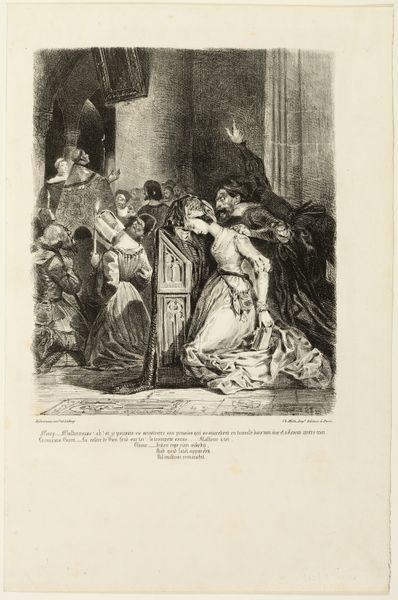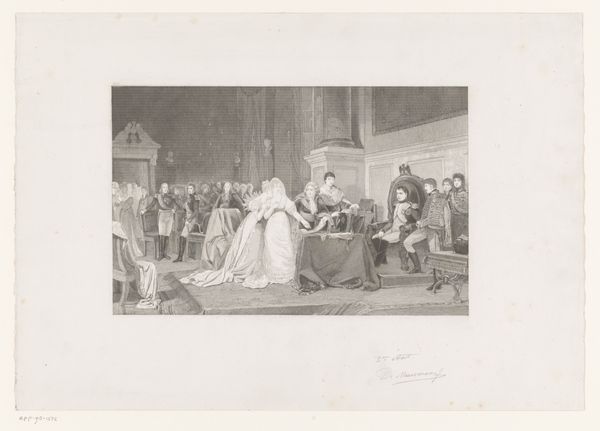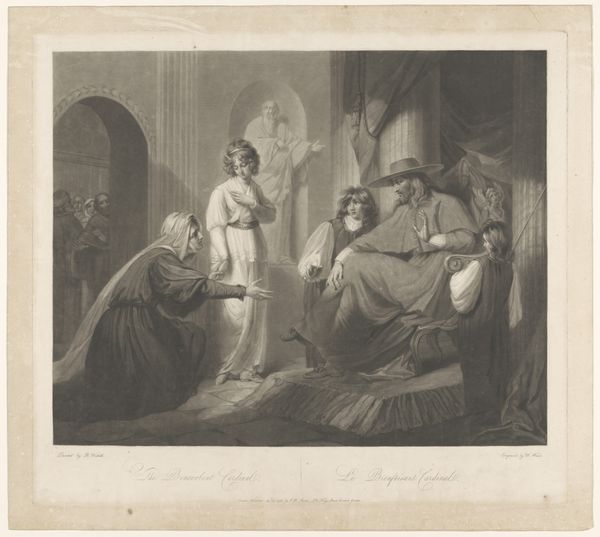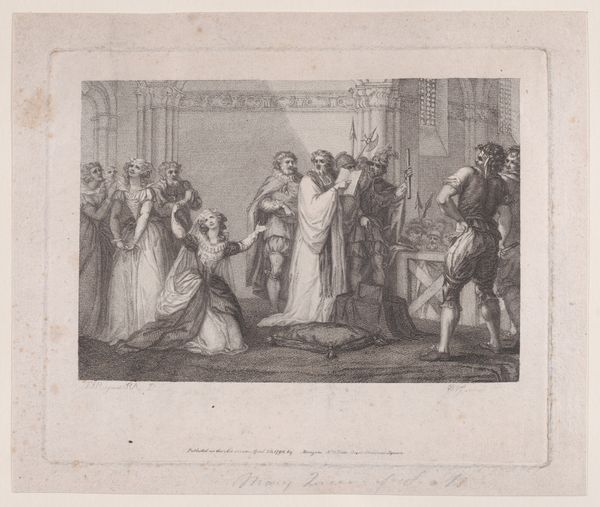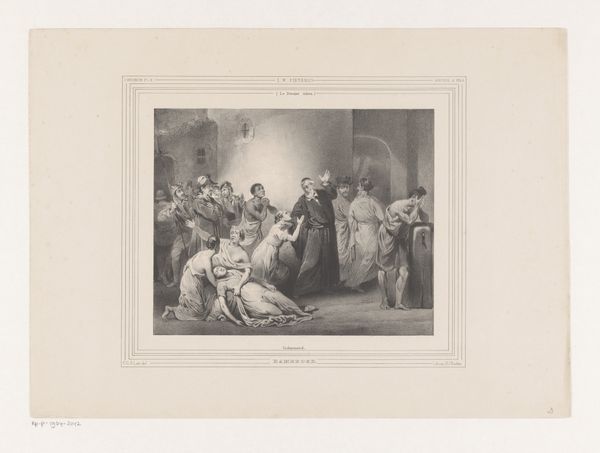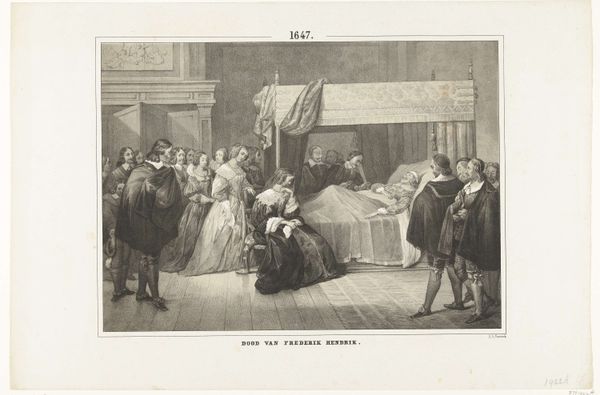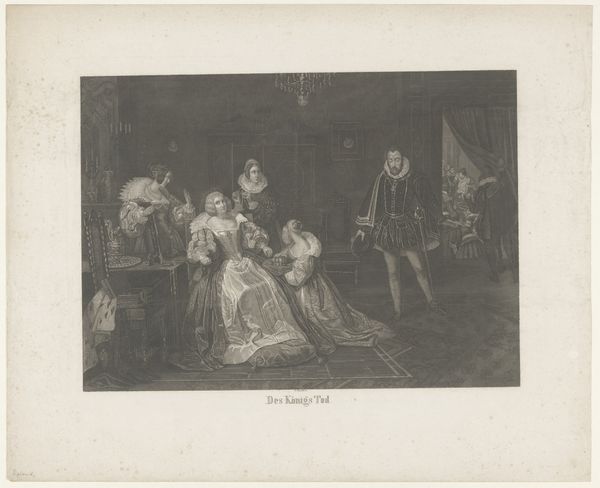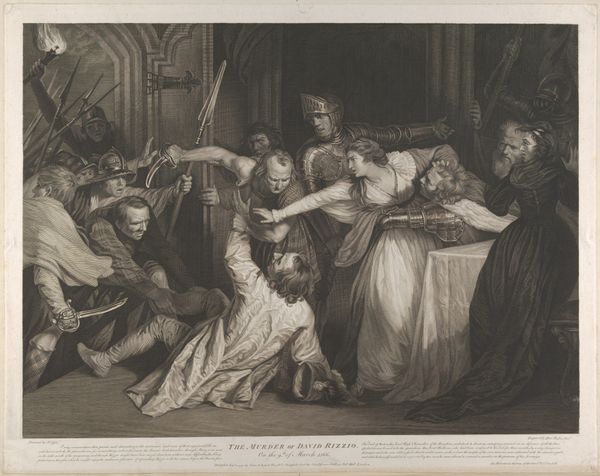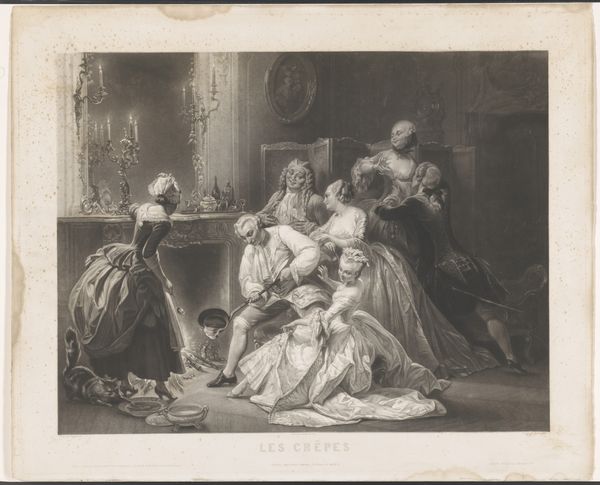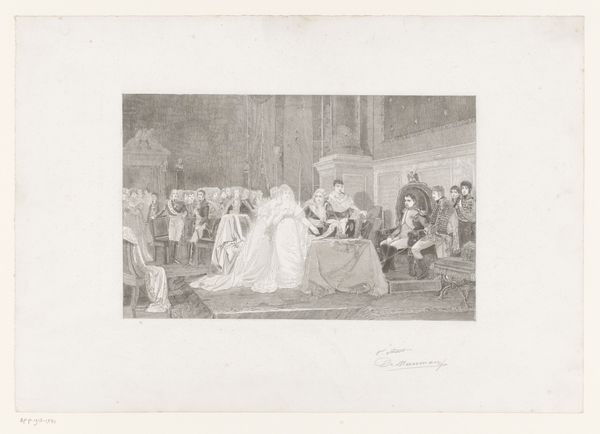
Dimensions: height 430 mm, width 530 mm
Copyright: Rijks Museum: Open Domain
Editor: So, this is "Leonardo da Vinci op zijn doodsbed in Fontainebleau," or "Leonardo da Vinci on his deathbed in Fontainebleau," an engraving from sometime between 1851 and 1865 by Adolphe Mouilleron. It's held here at the Rijksmuseum. The scene feels so staged, theatrical even. What symbols jump out at you in this image? Curator: Well, first consider the bed itself. It’s clearly a bed of state, raised on a dais, draped in heavy fabric. What does a bed symbolize? Beyond rest, it speaks to birth, death, intimacy, and power. Here, the opulent setting underscores the importance of the man within it, literally and figuratively elevating Leonardo. Editor: That makes sense. I was focused on the people. Curator: And rightly so. Notice who is present: Francis I, the King of France, cradling Leonardo. Royal power and artistic genius are intimately linked in this image. Who else do you observe in attendance? Each mourner contributes to the image's meaning. Editor: There are clerics, other figures who seem wealthy and important…almost like witnesses to a sacred event? The way everyone is looking at Leonardo... Curator: Precisely. Mouilleron uses Da Vinci's deathbed to portray an almost saintly passing. It conflates Leonardo’s genius with religious reverence, making him a symbol of artistic perfection blessed by earthly power. Do you think that reading is appropriate in view of the image as a whole? Editor: I hadn't thought about it like that, but the romantic style certainly contributes to that sense of idealization. This wasn't just a historical scene, but the construction of a myth! Curator: Indeed! And remembering the power of images, prints in particular, is key here. It isn’t a faithful record of what happened, but of how the artist wanted to represent history for a 19th-century audience. Editor: Thank you! I'll certainly look differently at prints now. They aren't simple records. Curator: Precisely! Every image has the potential for many complex readings.
Comments
No comments
Be the first to comment and join the conversation on the ultimate creative platform.
